Absolute Value - Definition, Examples, Quiz, FAQ, Trivia
Learn about distance from zero with simple explanations and interactive activities
What is Absolute Value?
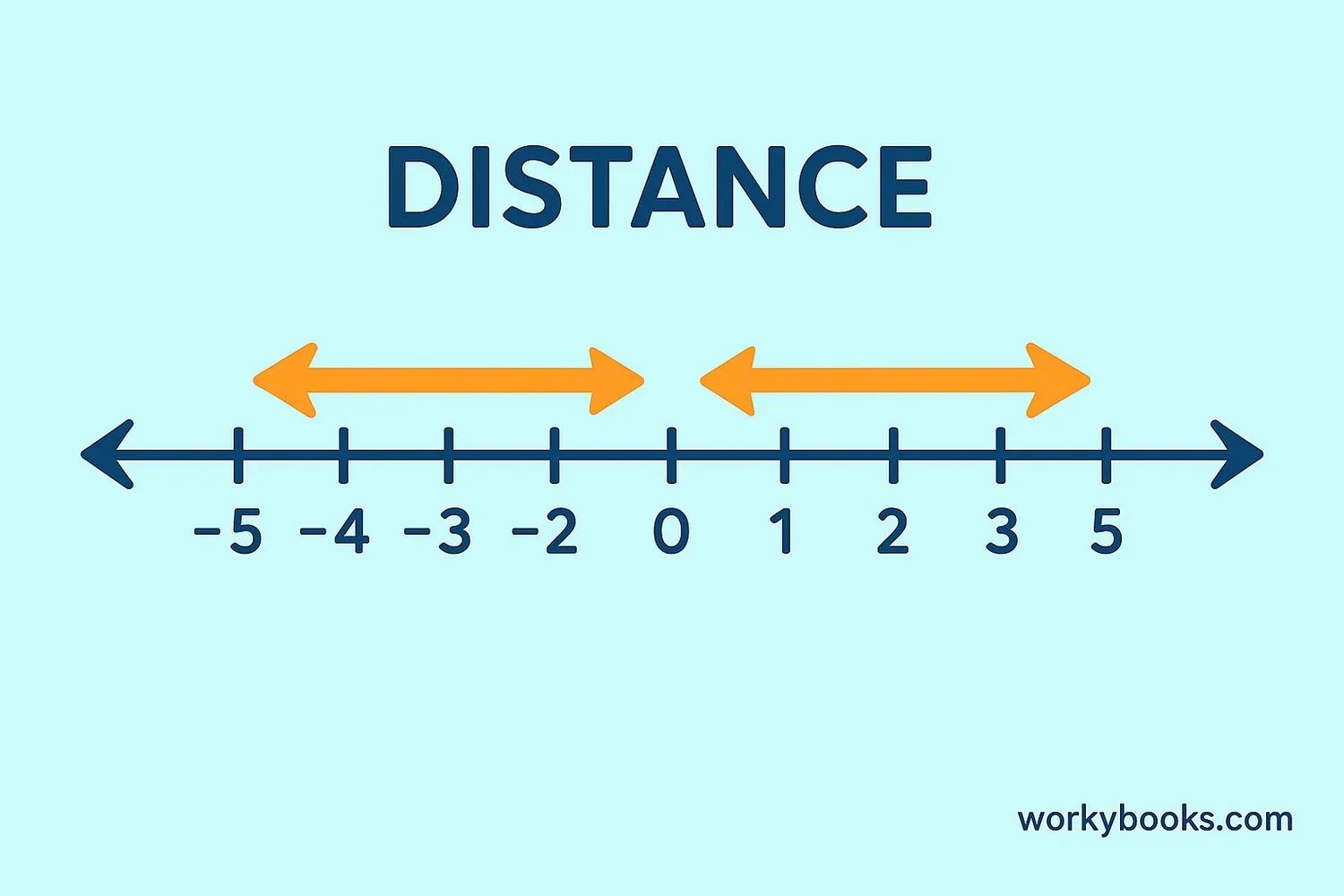
Absolute value is a special math idea that tells us how far a number is from zero on the number line. It doesn't matter if the number is positive or negative - we only care about how far it is from zero.
Think of it like measuring distance: whether you walk 5 steps left or 5 steps right from your starting point, you've still walked 5 steps. Absolute value works the same way with numbers!
The absolute value of a number is always positive or zero. It's never negative because distance can't be negative.
Key Concept
Absolute value measures distance from zero, so it's always positive or zero.
Absolute Value Symbol
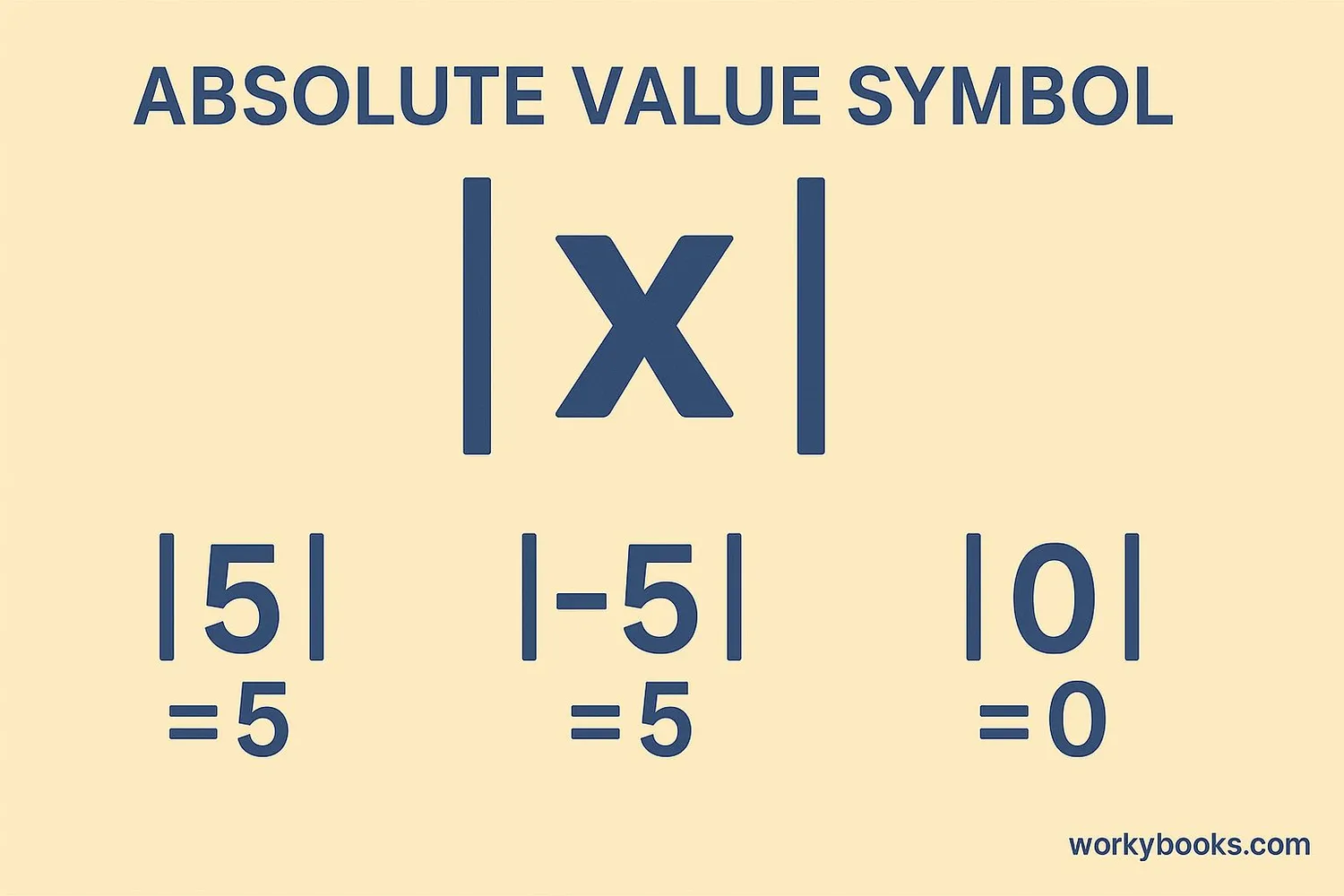
We write absolute value using two vertical bars around a number, like this: |number|. For example:
Absolute Value Notation
- |5| = 5 (5 is 5 units from zero)
- |-5| = 5 (-5 is also 5 units from zero)
- |0| = 0 (zero is zero units from itself)
- |3.2| = 3.2
- |-7| = 7
Remember
Vertical bars | | around a number mean we want its absolute value.
Absolute Value on a Number Line
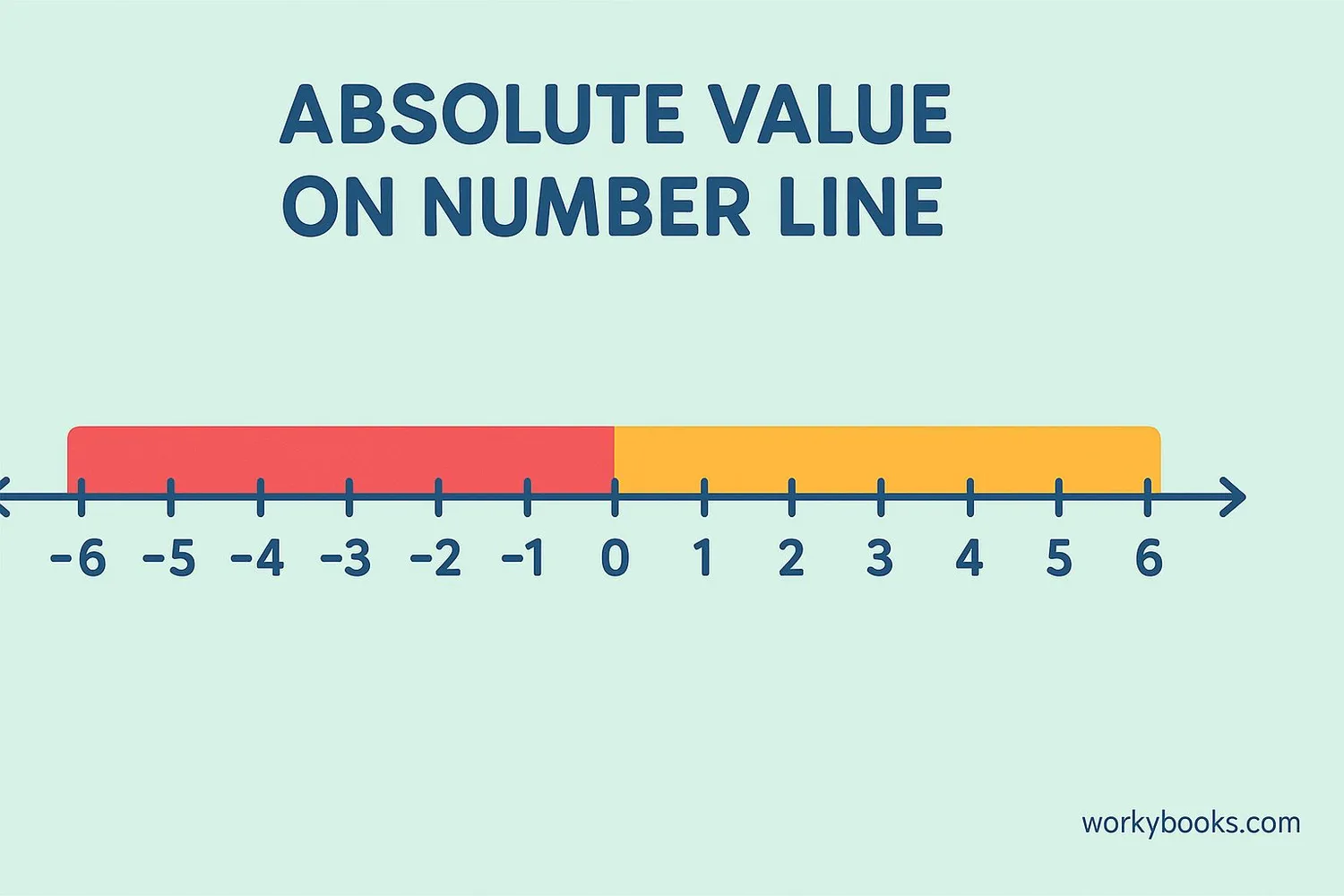
The number line is the best way to understand absolute value. Let's look at some examples:
In the number line above:
• Both 2 and -2 are exactly 2 units away from zero
• So |2| = 2 and |-2| = 2
• The green lines show the distance being measured
This visual helps us see that absolute value is about distance, not direction.
Number Line Tip
To find absolute value, just measure how far the number is from zero - ignore whether it's left or right.
Absolute Value Properties
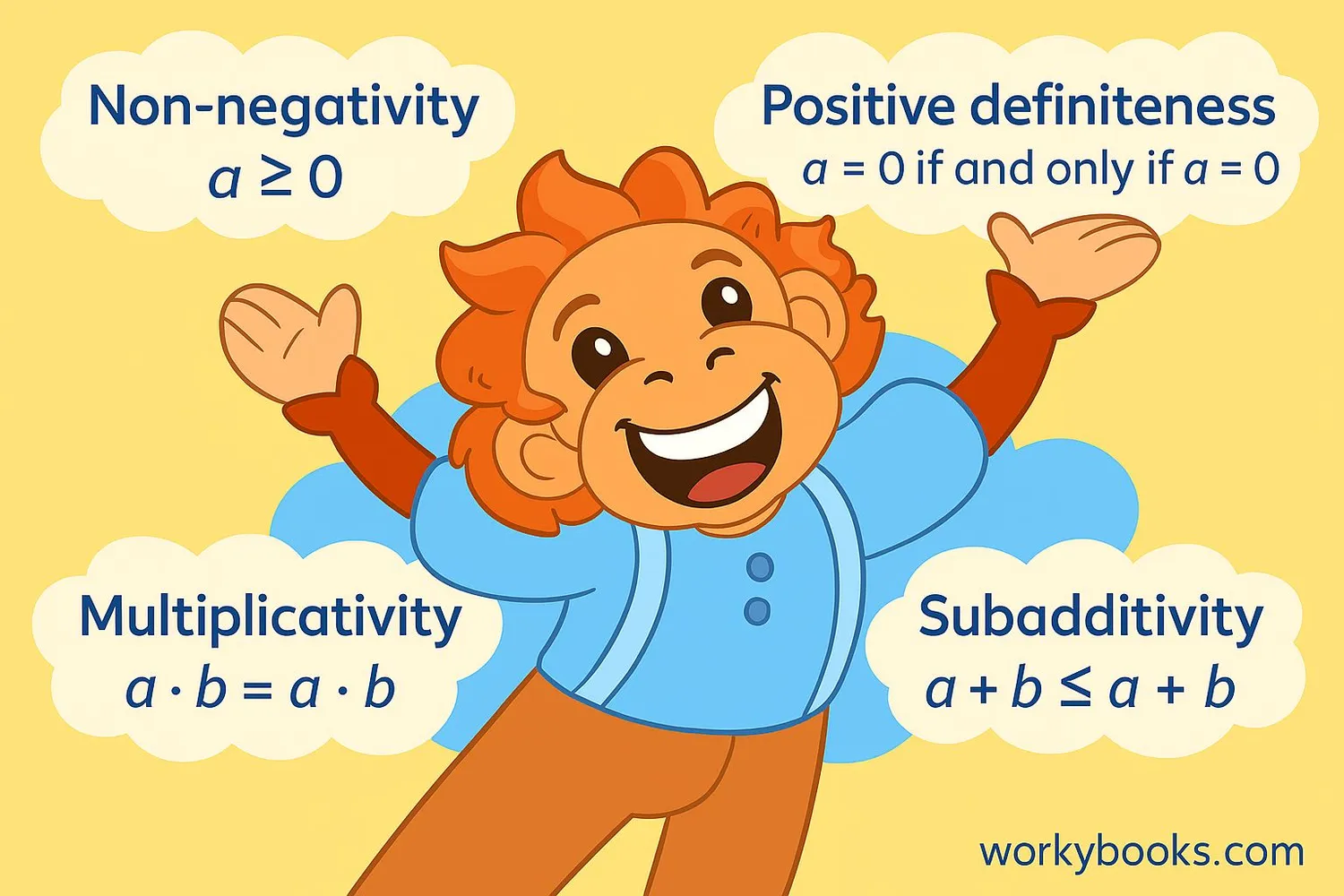
Absolute value has some special math properties that are always true:
1. Non-negativity: |x| ≥ 0 for any number x
Absolute value is never negative - it's always positive or zero.
2. Positive definiteness: |x| = 0 only when x = 0
The only number with absolute value zero is zero itself.
3. Multiplicativity: |x × y| = |x| × |y|
The absolute value of a product is the product of absolute values.
4. Subadditivity: |x + y| ≤ |x| + |y|
The absolute value of a sum is less than or equal to the sum of absolute values.
Property Tip
These properties help us solve math problems with absolute values more easily.
Real-World Examples
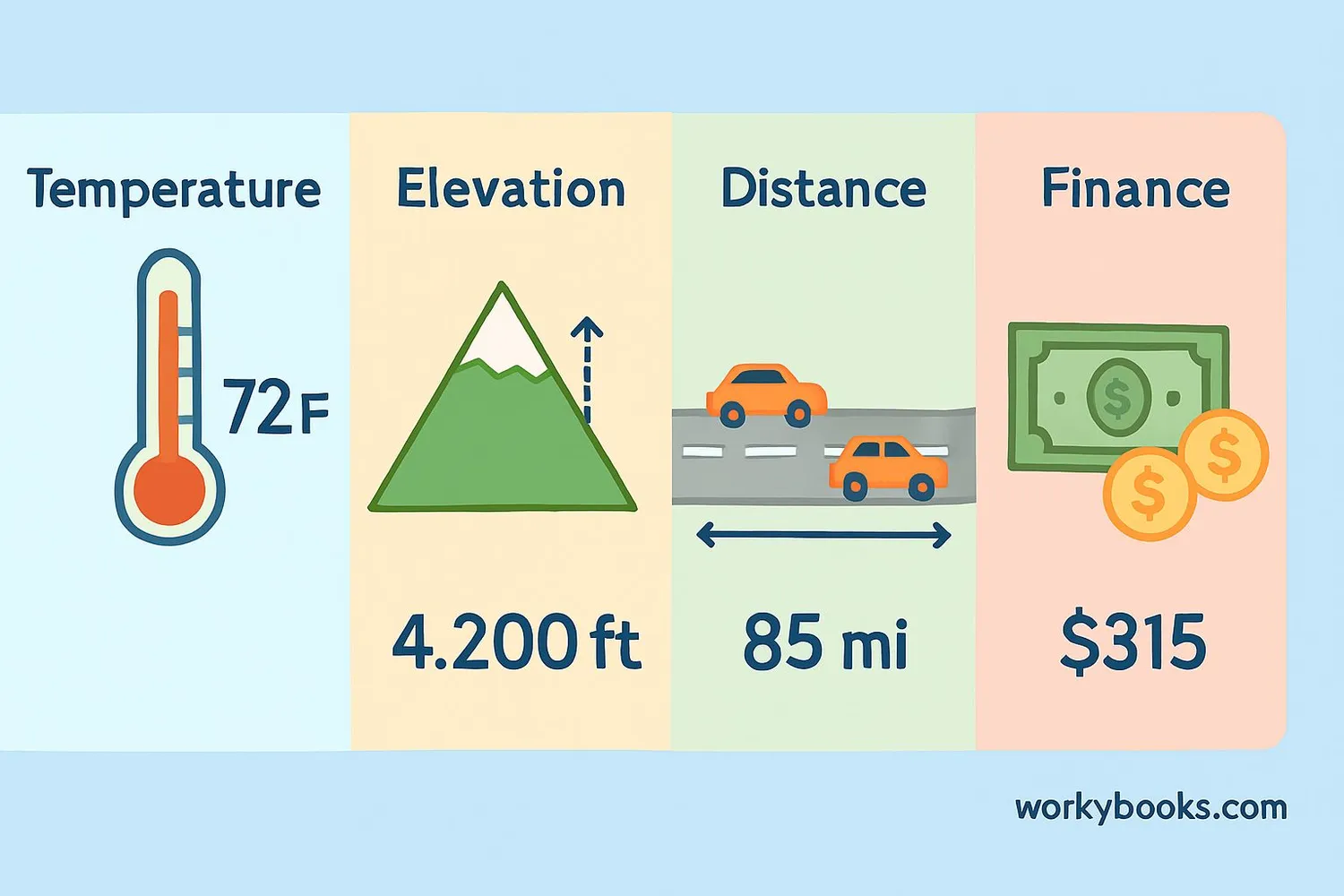
Absolute value isn't just for math class - we use it in real life too! Here are some examples:
Temperature: When we say it's -5°C outside, the absolute value | -5 | = 5 tells us how cold it is without worrying about the negative sign.
Elevation: If a location is 50 meters below sea level, we write it as -50 meters. The absolute value | -50 | = 50 tells us how deep it is.
Distance: If you walk 3 blocks east and then 3 blocks west, your position hasn't changed, but you've walked a total distance of |3| + | -3 | = 6 blocks.
Finance: If you owe $20 (which is -20 dollars), the absolute value | -20 | = 20 tells how much money you owe without the negative sign.
Real Life Tip
Whenever you see a situation that involves "how much" without worrying about direction, absolute value might be involved!
Absolute Value Quiz
Test your understanding with this 5-question quiz. Choose the correct answer for each question.
Frequently Asked Questions
Here are answers to common questions about absolute value:
Math Trivia
Discover interesting facts about numbers and absolute value:
Historical Origin
The concept of absolute value was first introduced by Karl Weierstrass in 1841. The vertical bar notation |x| was created by Augustin-Louis Cauchy in 1821.
Temperature Scales
Absolute zero is the coldest possible temperature at -273.15°C. The absolute value of this temperature (273.15) is used in the Kelvin temperature scale where 0K is absolute zero.
Space Distances
Astronomers use absolute value when measuring distances in space. The distance to stars is always expressed as a positive number, whether they're in front of us or behind us in the galaxy.
Largest Number
The number with the largest absolute value ever used in a serious mathematical proof is Graham's number. It's so large that the observable universe isn't big enough to write it down!





